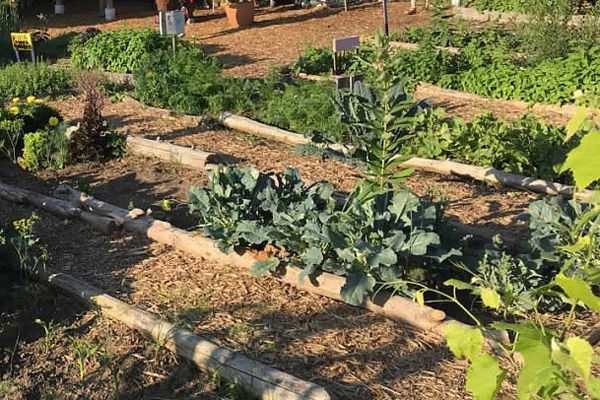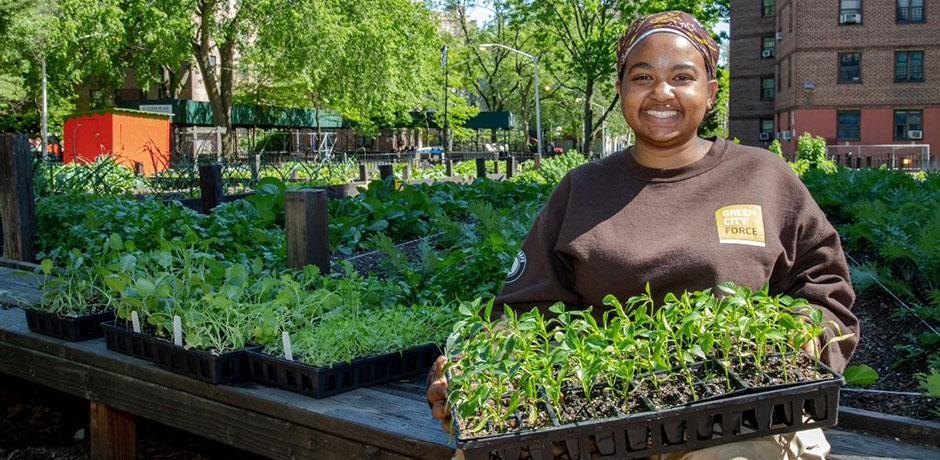The Of City Blooming
7 Simple Techniques For City Blooming
Table of ContentsThe Single Strategy To Use For City BloomingExcitement About City BloomingSome Known Details About City Blooming The Only Guide to City BloomingCity Blooming Can Be Fun For Anyone
Fascinated in expanding food offer for sale in the City of Chicago? Believing about beginning a neighborhood garden? Adjustments to the Chicago Zoning Regulation allow farming uses like area yards and urban ranches in many components of the city. Below is a listing of frequently asked inquiries relating to the guidelines and regulations that cultivators ought to consider when intending a city agriculture task.
The zoning amendment does not change any kind of various other codes dealing with composting, structure licenses, acquiring or leasing City had building, service licenses or environmental contamination. There are existing codes that manage these issues and they stay in complete impact and might be applicable to your project. Community gardens are normally had or managed by public entities, civic organizations or community-based companies and maintained by volunteers.
Urban farms grow food that is planned to be marketed, either on a not-for-profit or for-profit basis. Due to their commercial purpose, urban farms call for a company certificate.
The Ultimate Guide To City Blooming
Composting is permitted but just for plant material that is created and utilized on site. The amount of garden compost material can not exceed 25 cubic backyards at any type of given time according to the criteria in 7-28-715 of the City's Municipal Code. Yes. Due to the fact that the dirt at many new yard websites needs modifying, garden compost, soil, wood chips, or various other products can be acquired to build or enhance the expanding space - City gardening.

If a building license is required after that the hoophouse will be taken into consideration an accessory building. You can figure out more concerning the structure license needs by getting in touch with the Division of Structures. The 25,000-square-foot size limitation is planned to avoid a single area garden from controling a given block or diminishing the block's existing domestic or business character.
The restriction does not apply to gardens found in Public Open Space (POS) districts. Can there be greater than one area yard that is 25,000 square feet on a solitary block? Yes. The dimension limitation relates to specific gardens, not to private blocks. No. Secure fencing is not required, nonetheless, gardens that have big vehicle parking locations may be needed to mount secure fencing or other landscaping attributes.
Not known Facts About City Blooming
B1 & B2 districts call for that all commercial usage tasks be conducted inside. Is secure fencing required for city ranches? Fences might be called for, along with landscape design and screening, for particular car park areas and exterior work or storage locations depending on location and the details activity taking area.
Yes. Urban farms require building authorizations and zoning authorizations prior to construction. Various other types of city evaluation may be required depending on details frameworks, activities, dimension, landscaping, licensing, public health and stormwater monitoring problems. A lot of these demands are identified in the project layout or permitting procedure, nevertheless, the applicant may be liable to separately identify certain licenses or permits that might be needed.
The Division of Service Affairs and Customer Protection can assist determine the particular kind of organization license that's required. Off street car parking is needed for a lot of business projects in Chicago. The required number of vehicle parking rooms is based on the number of staff members working on site and not the square video footage of the expanding space.
The Only Guide for City Blooming

Yes. A city ranch can sell compost material produced on site, nevertheless, the procedure has to follow the guidelines in 7-28-715 of the Chicago Municipal Code. Yes. Aquaponic systems are permitted indoors on urban farms in lots of zoning areas. Nonetheless, a zoning review and building permit is required in order to set up frameworks or systems and an organization certificate is called for as defined over.
As much as 5 hives or nests of honey bees might be maintained as an accessory use. Beekeepers must register with the Illinois Division of Agriculture. For additional information regarding the suggested zoning amendment you might call the Department of Housing and Economic Growth, Bureau of Planning and Zoning at 312.744.8563.
Farming in cities and metropolitan locations A city ranch in Chicago. Urban agriculture describes different practices of growing. https://gravatar.com/danielnold94107, processing, and distributing food in metropolitan areas. The term also applies to the location tasks of pet husbandry, aquaculture, beekeeping, and gardening in a metropolitan context. Urban farming is distinguished from peri-urban farming, which happens in backwoods at the side of suburban areas.
More About City Blooming
, that seek to develop social networks founded on a shared principles of nature and great post to read neighborhood holism. These networks can create by method of official institutional support, ending up being incorporated into neighborhood town planning as a "change town" motion for lasting urban growth.
The extra direct access to fresh vegetable, fruit, and meat products that might be become aware through urban farming can boost food safety and security and food security while reducing food miles, leading to lower greenhouse gas discharges, consequently adding to environment adjustment reduction. Several of the first evidence of urban agriculture comes from Mesopotamia.